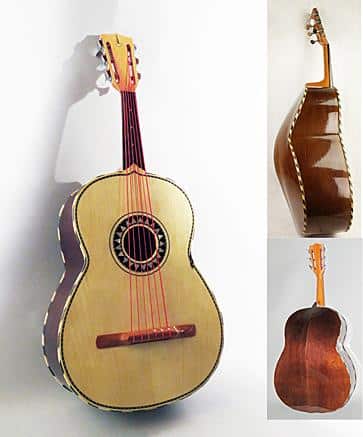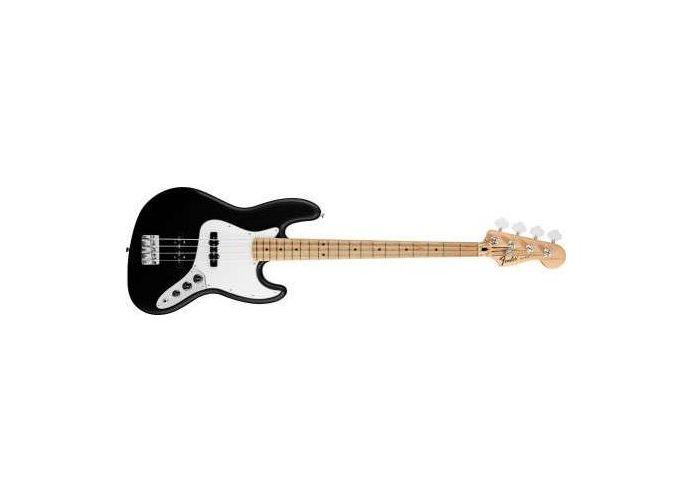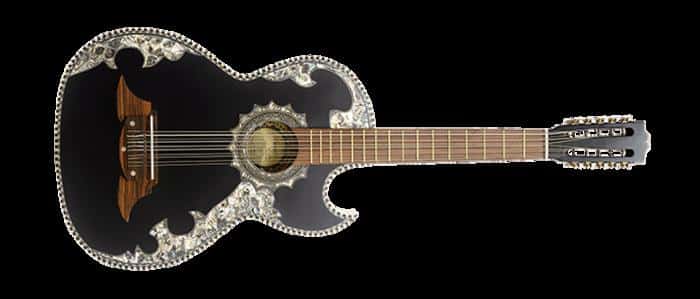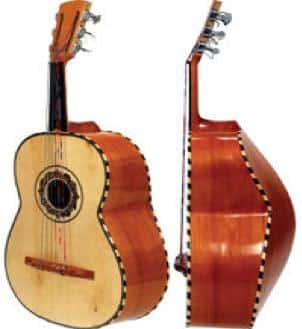The first time I heard the deep, resonant thrum of a Mexican bass guitar, I knew I was experiencing something truly special. As I stood in a dimly lit cantina in Guadalajara, the pulsating rhythms of a mariachi band washed over me, anchored by the unmistakable sound of the guitarrón. That moment sparked a lifelong fascination with Mexican bass instruments, from their traditional roots to their modern electric incarnations.
As the former Editor in Chief of Guitar Player magazine, I’ve had the privilege of exploring countless bass guitars from around the world. Mexican bass guitars have always fascinated me with their unique blend of tradition and innovation. In this article, we’ll embark on a journey through time and sound, tracing the evolution of these remarkable instruments from the imposing guitarrón to sleek, contemporary electric basses. We’ll delve into their rich history, examine key manufacturers, and compare their sound quality, build, and value to other global contenders.
Types of Mexican Bass Guitars
The Guitarrón: Mexico’s Traditional Bass

As I’ve delved deeper into the world of Mexican bass guitars, the Guitarrón stands out as a true icon. This large Mexican bass is not just an instrument; it’s the heartbeat of Mariachi music. During my tenure at Guitar Player, I had the privilege of examining several Guitarróns up close, and their sheer size and resonance never cease to amaze me. Unlike modern acoustic bass guitars, the Guitarrón’s deep, booming voice is achieved without amplification, thanks to its massive body and thick strings. Its unique pear shape and ornate decorations are a testament to Mexican craftsmanship. What truly sets the Guitarrón apart is its ability to cut through the bright sounds of trumpets and violins in a Mariachi ensemble, providing a solid foundation that’s felt as much as it’s heard. This traditional bass is not just a relic of the past; it’s a living, breathing part of Mexico’s musical heritage.
Modern Mexican Electric Bass Guitars

In my years of experience, I’ve found that modern Mexican electric bass guitars represent a significant evolution in Mexico’s rich bass-making tradition. These instruments seamlessly blend traditional craftsmanship with contemporary design and technology. Mexican Jazz Bass models, in particular, have caught my attention for their exceptional quality and value.
As I’ve played and reviewed numerous Mexican-made electric basses, I’ve consistently been impressed by their sound quality and versatility. Many of these instruments rival their American counterparts, offering premium features at more accessible price points. The attention to detail in construction and finishing is remarkable, reflecting Mexico’s long-standing guitar-making heritage.
These modern electric bass guitars have significantly contributed to Mexico’s reputation in the global music instrument market, bridging the gap between traditional and contemporary bass sounds.
History and Evolution of Mexican Bass Guitars

As I delved into the world of guitarmaking in Mexico, I found myself on a journey through time, tracing the roots of an instrument that has become an integral part of the country’s musical identity. The story of Mexican bass guitars is a tale of resilience, innovation, and cultural fusion that spans centuries. Are you ready to uncover this hidden history? My research for Guitar Player often led me to explore the rich history of guitar making, and the evolution of Mexican bass guitars is a fascinating journey that I’ve had the privilege to document through interviews with luthiers and musicians alike.
From the earliest days of Spanish colonization, the guitar found its way into Mexican culture, slowly evolving to suit local musical traditions. The guitarrón, with its deep, resonant tones, emerged as a uniquely Mexican innovation, bridging the gap between European and indigenous instruments. As I spoke with seasoned guitarrón players, I was struck by the pride they took in this instrument’s heritage, seeing it as a symbol of Mexican musical ingenuity.
The transition to electric bass guitars in Mexico was a gradual process, influenced by American rock and roll in the mid-20th century. I’ve had the pleasure of handling some of the earliest Mexican-made electric basses, marveling at how local luthiers adapted their traditional skills to this new technology. Today, Mexican bass guitars stand as a testament to centuries of craftsmanship, blending time-honored techniques with modern innovation to create instruments that resonate with both history and contemporary sound.
Key Players in Mexican Bass Guitar Manufacturing

In my years of exploring the world of bass guitars, I’ve had the privilege of witnessing the artistry and craftsmanship behind some of the most celebrated instruments in the industry. What if I told you that some of the world’s most iconic bass guitars are crafted not in the USA, but in the sun-soaked workshops of Mexico?? This revelation came to me during my numerous visits to guitar factories south of the border, where I’ve interviewed countless manufacturers and observed their meticulous processes firsthand.
The landscape of Mexican bass guitar manufacturing is dominated by a few key players, with Fender standing out as the most influential. Their Ensenada factory has been producing high-quality instruments since 1987, shaping the industry and setting standards for Mexican-made bass guitars. I’ve watched skilled luthiers craft Fender bass models with the same precision and care as their American counterparts, often at a fraction of the cost.
Another significant player is the Fender Squier line, which offers entry-level basses that have become staples for beginners and budget-conscious musicians alike. During my tours of their facilities, I’ve been impressed by the attention to detail in even their most affordable models. The passion and pride of Mexican craftsmen shine through in every instrument, from the humble Squier to the premium Fender models, cementing Mexico’s place in the global bass guitar market.
Comparing Mexican-Made Bass Guitars to Others
Sound Quality and Tonal Characteristics

When it comes to sound quality and tonal characteristics, Mexican-made bass guitars often surprise me with their unique voice. Through countless gear reviews and listening sessions, I’ve developed a keen ear for the nuances in bass tones. Mexican bass lines typically exhibit a warm, punchy character that I find both familiar and distinctive. The midrange presence is often more pronounced, giving these instruments a voice that cuts through the mix without sacrificing low-end depth. I’ve noticed that many Mexican basses possess a certain growl when played with vigor, perfect for genres like rock and funk. However, they’re equally capable of producing smooth, mellow tones suitable for jazz and R&B. This versatility, combined with their unique tonal fingerprint, makes Mexican-made basses a compelling choice for players seeking to stand out sonically.
Build Quality and Craftsmanship

As I run my hands over the smooth finish of a Mexican-made bass, I’m reminded of the exceptional craftsmanship that goes into these instruments. Having examined thousands of basses over the years, I’ve developed a keen eye for quality, and Mexican manufacturers consistently impress me. The attention to detail is remarkable, from the precise fretwork to the flawlessly applied finishes.
What sets Mexican bass guitar craftsmanship apart is the fusion of traditional techniques with modern manufacturing processes. This blend results in instruments that are both durable and aesthetically pleasing. I’ve noticed that the wood selection is often on par with higher-end models, and the hardware installation is executed with precision. While there may be occasional variations, the overall build quality of Mexican-made basses often rivals that of their American counterparts, offering exceptional value for musicians at various skill levels.
Price and Value Proposition

As a long-time observer of the guitar market, I’ve witnessed Mexican-made instruments consistently offer exceptional value. These basses often strike an ideal balance between quality and affordability, providing professional-grade performance at accessible price points. In my experience, Mexican-made bass guitars frequently outperform their price tags, offering features and build quality comparable to higher-priced alternatives.
The value proposition of Mexican basses lies in their ability to deliver premium tones and playability without breaking the bank. I’ve found that many seasoned musicians opt for these instruments not just as budget-friendly options, but as reliable, gig-worthy tools. This cost-effectiveness, coupled with their impressive quality, has significantly contributed to the growing popularity and respect for Mexican-made bass guitars in the global market.
Popular Mexican Bass Guitar Models

As I’ve explored the world of Mexican bass guitars, I’ve been consistently impressed by the quality and versatility of these instruments. From stadium stages to garage bands, these Mexican bass guitars have become the secret weapons of bassists worldwide. But which models reign supreme? Over the years, I’ve had the opportunity to play and review countless Mexican bass models. Some have become true classics, beloved by professionals and amateurs alike.
The Mexican Jazz Bass stands out as a perennial favorite. Its warm, punchy tone and comfortable playability have made it a go-to choice for countless bassists across genres. I’ve personally witnessed its versatility in action, from jazz clubs to rock arenas. Another standout is the Mexican Fender bass, particularly the Precision Bass models. These instruments offer a perfect blend of classic tone and modern playability, often at a more accessible price point than their American-made counterparts.
In my experience, the Mexican-made Fender Player Series has been a game-changer. These basses offer exceptional value, with build quality and sound that rivals much more expensive instruments. I’ve seen countless players, from beginners to seasoned pros, fall in love with the rich, full-bodied tone of these basses. It’s no wonder they’ve become staples in recording studios and on stages worldwide.
Maintaining and Upgrading Mexican Bass Guitars

As a bass enthusiast who’s spent years tinkering with instruments, I’ve learned that maintaining and upgrading Mexican-made basses can be a rewarding journey. Could a few simple tweaks transform your Mexican-made bass into a custom shop dream? Discover the secrets to unleashing your instrument’s full potential. Through my work with Guitar Player and interactions with countless luthiers, I’ve gathered a wealth of knowledge on this subject, and I’m eager to share it with fellow bassists.
First and foremost, regular maintenance is crucial. I always start by cleaning the fretboard and oiling it if needed. This simple step can dramatically improve playability and tone. Next, I focus on the bass guitar strings. Experimenting with different gauges and materials can significantly alter your sound. Personally, I’ve found that flatwound strings on a Mexican Precision Bass can yield a warm, vintage tone that rivals much pricier instruments.
When it comes to bass guitar upgrades, the possibilities are endless. One of my favorite modifications is swapping out the stock pickups. I once installed a set of high-end pickups in a Mexican Fender Jazz Bass, and the transformation was astounding. The improved clarity and punch made it indistinguishable from its American-made counterparts. Another worthwhile upgrade is replacing the bridge. A high-mass bridge can enhance sustain and resonance, breathing new life into your instrument.
Remember, the key is to approach upgrades thoughtfully. Each modification should serve a purpose, enhancing your bass’s strengths or addressing its weaknesses. With the right approach, your Mexican-made bass can truly sing.
FAQs
What is a Guitarrón and how does it differ from other Mexican bass guitars?
A Guitarrón is a large acoustic bass guitar used in mariachi music. It differs from other Mexican bass guitars in its size, typically being much larger, and its distinctive deep, rich tone. Unlike electric bass guitars, the Guitarrón is fretless and played with the fingers rather than a pick.
How has the Mexican bass guitar evolved from traditional to electric models?
The evolution of Mexican bass guitars has been marked by a transition from traditional acoustic instruments like the Guitarrón to modern electric bass guitars. This shift was influenced by the rise of rock and pop music in Mexico. Electric bass guitars offer greater versatility, allowing players to easily amplify their sound and experiment with different tones, while still maintaining elements of traditional Mexican music in contemporary genres.
What are the key differences between Mexican-made electric bass guitars and their American counterparts?
Key differences between Mexican-made and American-made electric bass guitars include:
1. Price: Mexican-made basses are generally more affordable.
2. Components: American-made basses often use higher-grade materials and electronics.
3. Craftsmanship: While both can be high-quality, American-made basses are often associated with more meticulous attention to detail.
4. Tonal characteristics: Mexican-made basses may have a slightly different sound profile, often described as having more midrange punch.
5. Resale value: American-made basses typically hold their value better in the second-hand market.
How do playing techniques differ between traditional Mexican bass guitars and modern electric basses?
Playing techniques differ significantly between traditional Mexican bass guitars and modern electric basses:
1. Fingering: Traditional instruments like the Guitarrón are played with bare fingers, while electric basses can be played with fingers or a pick.
2. Fretting: The Guitarrón is fretless, requiring greater precision in hand positioning, while most electric basses have frets.
3. Amplification: Traditional basses rely on acoustic projection, while electric basses require amplification, allowing for a wider range of tonal manipulation.
4. Rhythmic approach: Traditional Mexican bass playing often involves more complex rhythmic patterns, while electric bass playing can vary widely depending on the genre.
5. String tension: The Guitarrón has much higher string tension, requiring a different playing technique compared to the lower tension of electric bass strings.
What are some popular Mexican bass guitar brands and models?
Popular Mexican bass guitar brands and models include:
1. Fender: The Mexican-made Fender Player Series basses are highly regarded.
2. Malinche: Known for their high-quality, handcrafted acoustic and electric basses.
3. Cervantes: Produces both traditional and modern bass guitars with Mexican craftsmanship.
4. Paracho Elite: Offers a range of affordable, quality Mexican-made basses.
5. La Bella: While primarily a string manufacturer, they also produce Mexican-inspired bass guitars.
These brands offer a mix of traditional Mexican designs and modern electric bass styles, catering to various playing preferences and musical genres.
Conclusion
As we’ve journeyed through the world of Mexican bass guitars, one thing becomes clear: these instruments are not just shaping music, they’re redefining what’s possible in bass manufacturing. After decades in the guitar industry, I’ve developed a deep appreciation for Mexican bass guitars. Their unique blend of tradition, innovation, and value continues to impress me, and I’m excited to see how they’ll shape the future of bass playing.
From the rich heritage of the guitarrón to the cutting-edge designs of modern electric basses, Mexican luthiers have consistently demonstrated their ability to craft instruments of exceptional quality. The evolution of these instruments reflects not just technological advancements, but also the cultural resonance of bass in Mexican music. As we look to the future, it’s clear that Mexican bass guitars will continue to play a pivotal role in shaping the global music landscape, offering players an unparalleled combination of sound, craftsmanship, and value.